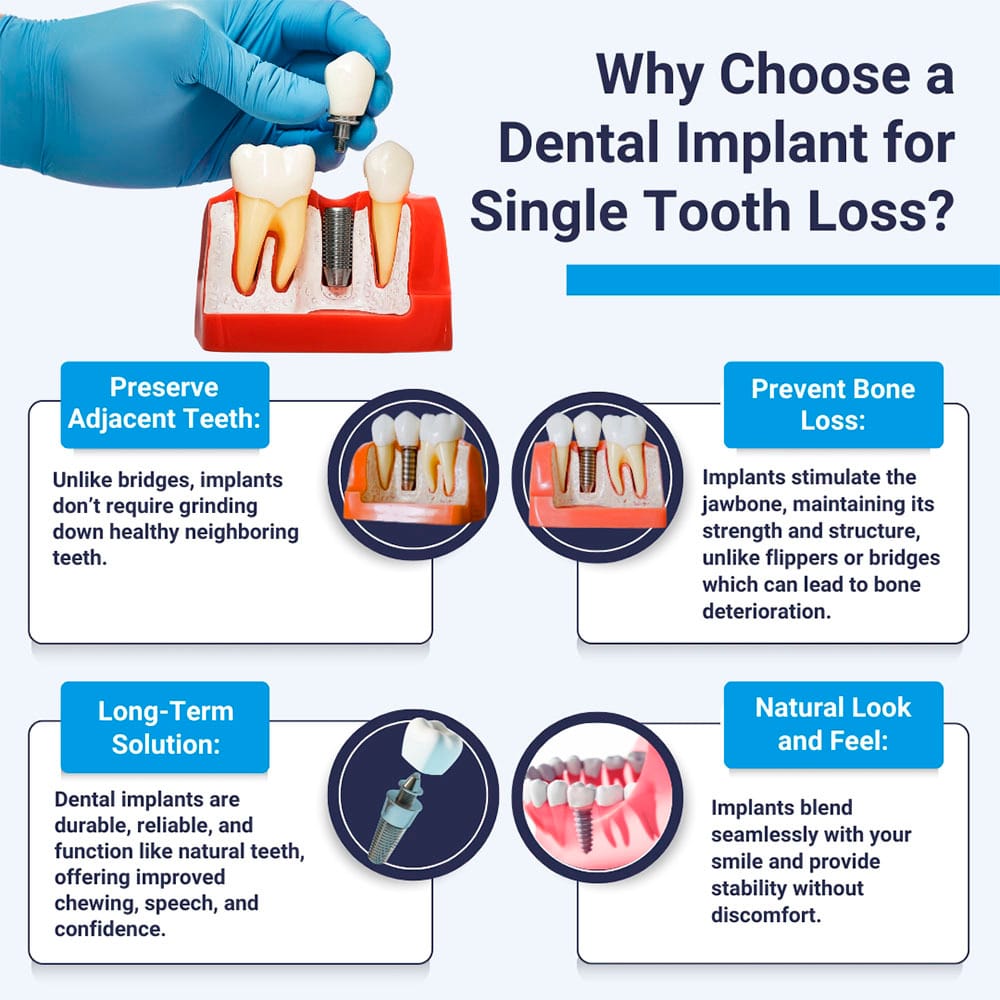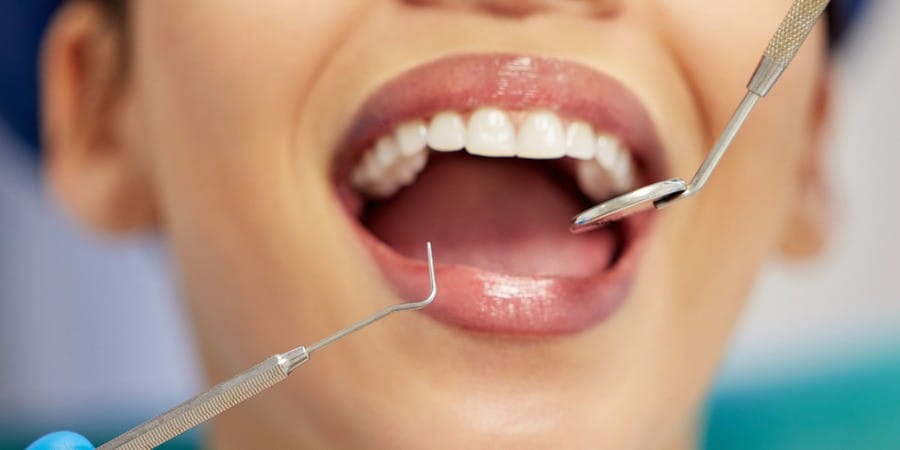Do you have a failing tooth that you know will need extracting soon? Perhaps you have already lost a tooth and are interested in exploring options for replacing it? If so, you might have learned a little about dental implants but are maybe unsure of how treatment works, who can have implants, and what makes this solution so special.
In Franklin Square, dental implants are preferred for their durability and aesthetic appeal. Unlike a dental bridge, they don’t require grinding down healthy adjacent teeth, and they provide excellent biting strength similar to natural teeth. Additionally, implants help maintain jawbone density, preventing the bone resorption that can occur after tooth loss.
Read more: What Is a Dental Implant Bridge & How to Choose It in Franklin Square?
Understanding Dental Implants and How They Work
Usually, dental implants have three components. The first is the body of the implant, which is a small post or screw. It is strategically inserted into the jawbone during a short surgical procedure. The implant body is specially treated to fuse with the bone around it, a process called
Osseointegration. During this process, new bone cells grow on and around the post so that in three months or so, the post is bonded firmly in the jawbone and is strong enough to support a new tooth.
The second is the implant abutment. The abutment is attached to the implant body, and it protrudes above the gum line. The abutment supports the tooth restoration, which is the final component. The restoration can be an implant crown when restoring just a single tooth, or people missing multiple teeth or full mouth side by side can restore them with an implant bridge.
Both these restorations are fixed in place, so you cannot remove them, and only your dental implant dentist can take them out. An implant denture is different as it clips onto the abutments, and the wearer can take it out for cleaning every day.
Read more: How to Restore that Gap in Your Smile in Franklin Square, NY
Why Choose an Implant for Single Tooth Loss?
There are three main choices to replace a single missing tooth. These are to have a single tooth denture, called a flipper, a dental bridge with crowns over the adjacent teeth attached to a replacement tooth, forming a three-tooth bridge, or a single dental implant.
A dental flipper is only really considered a temporary solution because it is unstable, won’t be very comfortable to wear, and won’t provide good biting or chewing strength. It can be a good option while you decide how you’d like to replace your tooth but don’t think of it as a long-term solution.
A three-tooth bridge is a popular choice, but this option has some drawbacks. The main drawback is the need to crown the adjacent teeth on either side. These teeth must be strong enough to support the bridge, and to fit the crowns, a dentist needs to remove a substantial amount of tooth structure.
That’s all very well if these teeth are decayed, stained, or aren’t a nice shape, but if they are healthy and strong and nicely shaped, it’s undesirable to remove this tooth structure. Once crowned, there is always a risk the crowns will begin to leak as they age, and when it comes to replacing the restoration, you will need to budget for a three-tooth bridge rather than just a single implant crown.
With a single dental implant, there is no need to grind down or change the shape of adjacent teeth in any way. At the same time, the implant helps to share the load created when you bite and chew food, and it prevents the adjacent teeth from moving out of place, as any movement of these teeth can destabilize them.
It’s particularly important to think about the impact on your jawbone. When you lose a real tooth, your dentist removes the entire tooth, including the root that normally extends deep into the jawbone.
A healthy tooth root performs an important function. It maintains the jawbone around it, providing stimulation that tells your body to replace old bone cells in the jawbone as they gradually die off as bone is continually remodeling. When the tooth root is removed, old bone cells are no longer replaced as they die off because they don’t receive the right stimulation.
This is why people who wear dentures will often find they become loose, ill-fitting, and uncomfortable quite soon after tooth loss. However, if you opt for an implant, the implant body or post provides the right level of stimulation to the bone around it to ensure bone cells are replaced, protecting and preserving the strength of your jawbone.

Read more: Could Dental Implants Help Your Smile Makeover?
What about Implant Surgery?
One factor that can deter people from investigating dental implants further is the thought of having oral surgery, but the procedure needed to insert a single implant is quick and painless. It typically takes an hour or less to insert the implant. You can rest assured your implant dentist will make sure you receive plenty of anesthetic beforehand.
If you feel nervous or anxious, you can always opt for dental sedation. Don’t let the idea of oral surgery put you off because it is easy to cope with, and most people have very little or no discomfort after the anesthetic wears off.
Read more: What Can Go Wrong with Dental Implants?
How Soon Can I Have an Implant Tooth?
If you are interested in dental implants, you need to make an appointment to see a good and highly experienced implant dentist. They will need to assess your mouth to ensure you are suitable for implant surgery and that your jawbone is strong enough to support the dental implant.
Sometimes when a tooth is lost due to gum disease or trauma, the bone around it may be damaged or missing, but this isn’t generally a problem as it can be restored with a bone graft. If you decide to go ahead with a dental implant, your dentist can plan the surgery using a cone beam CT scan taken of your mouth.
The CT scan is crucial because it provides 3-D images of your teeth and jaws, allowing your implant dentist to plan exactly how to situate the implant.
If you need a tooth removed, it’s often possible to extract the tooth and fit the implant simultaneously. These days it’s quite common to fit a temporary tooth onto the implant soon after surgery which is worn while the implant heals with the bone around it.
Even if this isn’t possible, your implant dentist can provide you with some form of temporary restoration until you can receive your permanent implant tooth that should look and feel fabulous.
Local dental practices like Clocktower Dental in Franklin Square, emphasize the importance of proper oral hygiene and regular check-ups to ensure the longevity of dental implants. We also offer advanced technologies such as computer-guided surgery to enhance precision and patient comfort. Call us at (516) 352-1000 to schedule an appointment. Visit our website for more information https://www.clocktower-dental.com/

